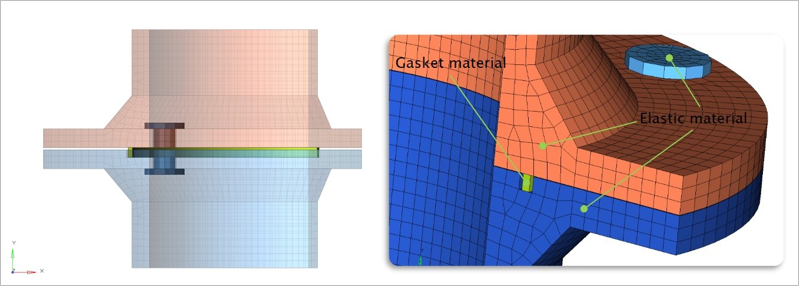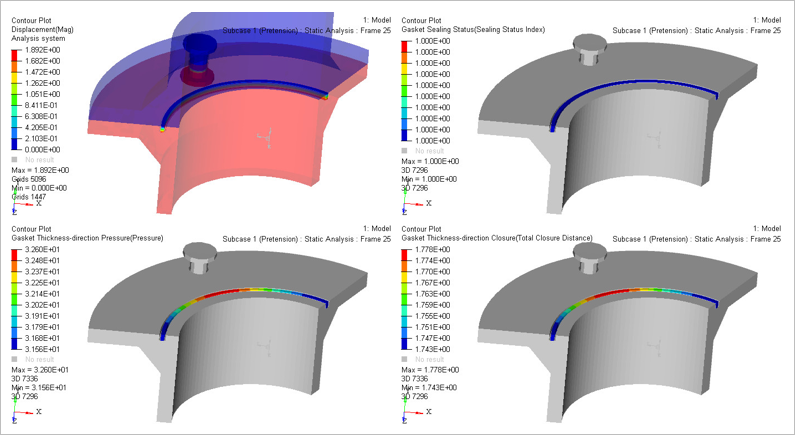OS-E: 0015 Pretension Analysis using Gasket Material
Structure quarter symmetric pipe model with pretension bolt and a gasket seal, demonstrates the usage of gasket material and gasket seal specific results for diagnostics.

Figure 1. FE Model
Model Files
Model Description
The finite element model, as shown in Figure 1, is constrained with symmetric boundary conditions and pretension force is applied on the bolt.
- FE Model
- Element Types
- CHEXA
- Linear Material
- Young’s Modulus
- 2.1E5 MPa
- Poisson's Ratio
- 0.3
- Gasket Material
- MAT1
- MGASK
Results

Figure 2. Gasket Seal Status, Gasket Closure, and Gasket Pressure Plots